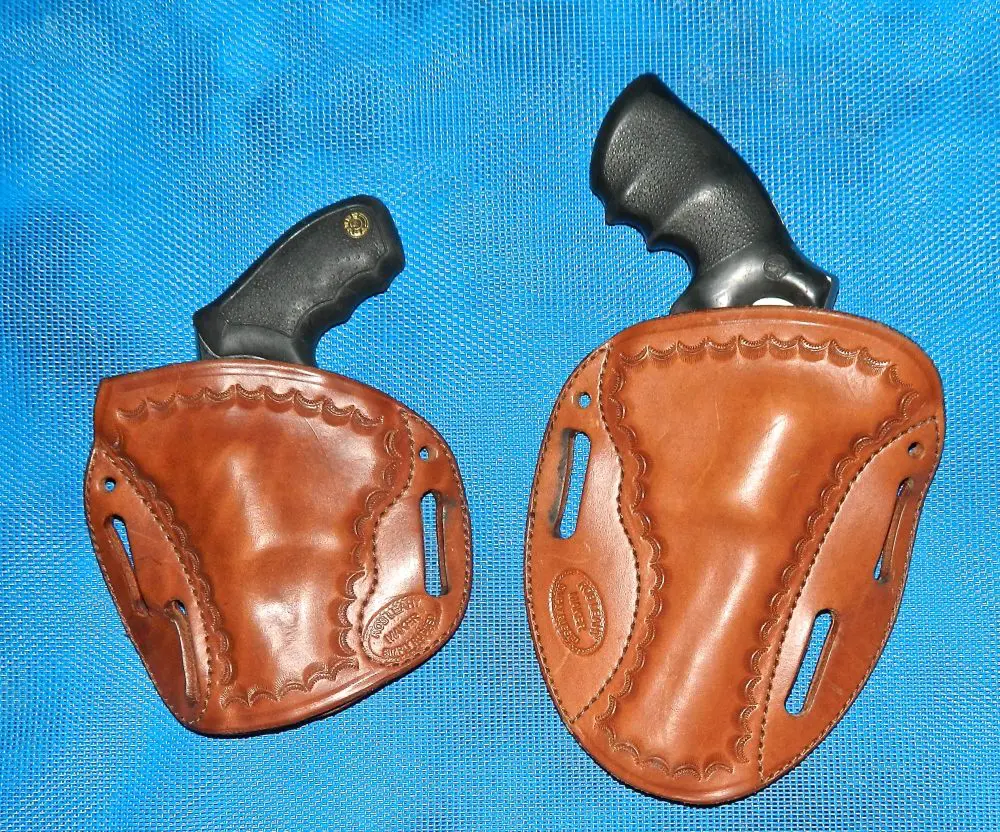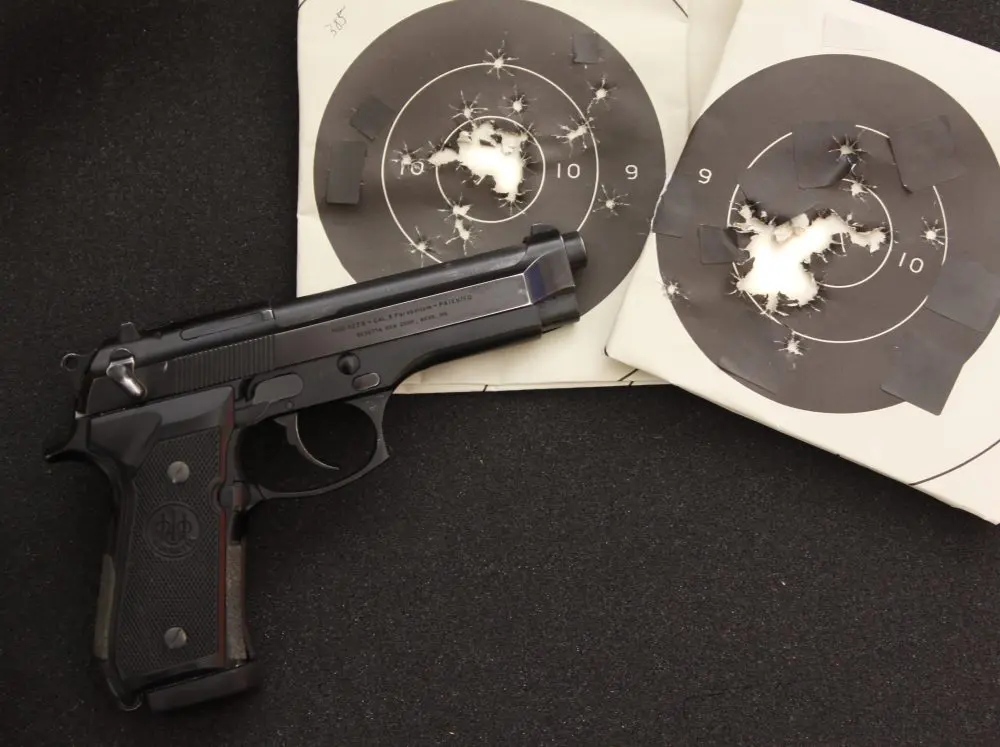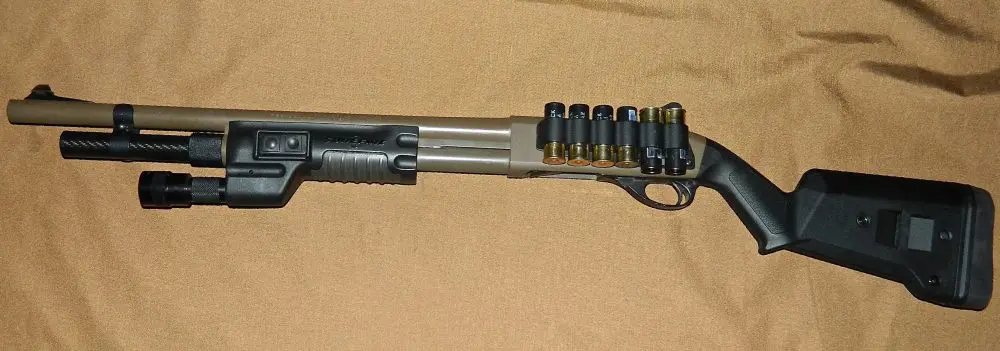“You can’t use that flashlight technique. The enemy will fire at the light source and hit you by mistake.”
Let me guess: been reading too many detective novels?
Face facts: the bad guys don’t hit the good guys “by mistake.” They miss by mistake, so let’s get our priorities straight. You may eat bullets because your enemy is a better fighter than you, or a better marksman, more cunning, nefarious or dedicated, but you’re not going to get lead poisoning because he “made a mistake.” You may in fact die merely because of plain bad luck—or because your enemy didn’t make a mistake.
Or you could be taken out by poor use of a flashlight in a dim-light environment. But shuffling off your mortal coil simply because you use a mechanical technique that isn’t in accordance with an instructor’s ego isn’t likely.
All too often people tend to get wrapped around the axle about the use of flashlights in conjunction with guns. Like a martial artist in a dojo, much of what works—or seems like a good idea in a sterile environment like a shooting range—doesn’t pan out too well in a for-real fight.
Take, for example, the “enemy will fire at the light source” theory. Let me see… He’s night blind, can’t pinpoint your location until he has an audible or visual on you, and he couldn’t care less if he kills you along with 13 nuns and a busload of school kids in the background. Yes, I think there’s a vague possibility that he might drain his weapon in the general direction of the light source. It doesn’ttake an astrophysicist to deduce this.
Let’s be honest: Any flashlight technique places the light source either directly in front of, or in close proximity to, your beak anyway. The base idea is to smoke him before he smokes you—that’s why it’s called a gunfight.
The underlying criterion of the flashlight technique hysteria is whether the enemy is trying for one surgical round or not. If he’s on rock ’n’ roll it doesn’t matter one whit what technique you use unless it’s to afford more cover for yourself than would be achieved by using something else. In other words, it’s situational—and that’s why you need to be capable of shooting well utilizing more than one technique.
Obviously the objective isn’t to walk across an open football field with a flashlight taped to your forehead like Diogenes looking for an honest man—all you’ll find under these circumstances is a projectile-launching dishonest man. The general idea is to use the illumination from the flashlight to identify possible targets, and if need be to dispatch said targets by means of gunfire, with the light remaining on target until the last round has exited the muzzle of the weapon to guarantee optical follow-through on the front sight of the weapon.
While most firearms—especially slide-action rifles and shotguns—are more easily deployed with a dedicated light attached to the weapon, hand-held flashlights are much more predominant for a variety of reasons. Apart from the financial aspect (not forgetting that some hand-helds can run you a couple of thousand dollars), unless you know what you’re walking into, or have military or law enforcement issue equipment, the odds are for the most part you’ll have a pistol in one paw and a hand-held light in your support hand.
And having said that, if your dedicated light dies in mid-fight, you’d better have a hand-held flashlight for back up. You’re the good guy, remember? If you can’t identify, you can’t shoot. Let’s face it—there aren’t many good blind gunfighters around.
While dedicated lights have been around since the late 1800s, it was only in the last quarter of the 20th century that SureFire began a concerted effort to produce quality high-intensity fighting lights. (In the for-what-it’s-worth department, this author personally feels that everybody else is a day late and a dollar short. Yes, imitation is the sincerest form of flattery, but when you emulate somebody you wind up being an emu that is late—no more, no less.)
So having procured a quality flashlight, what technique do you use when deploying said light in conjunction with a pistol? Whatever your little heart desires is what you use. It’s kind of like the incessant “what’s the best bullet” discussions. The last one you fired that stopped the fight—that’s the best bullet.
While Mike Harries’ technique has been documented as successful over and over, some people physically cannot use it. Similarly, while people often scoff at the one-handed FBI technique, it has solved the problem on occasions when the shootists couldn’t visually acquire their target using other techniques. The same pros and cons apply to the Chapman, Rogers, Surefire, Ayoob, and I-invented-it-and-named-it-after-myself techniques.
Scenario One:
Police officer, southern California. Gunfight. FBI technique. Crook puts one round through bezel, barrel and rear end of SL20 flashlight. Cop uninjured, kills crook. Draw your own conclusions as to officer’s opinion of FBI technique.
Scenario Two:
Yours truly sets up multiple moving target crowd scene for night shoot SWAT trainees, who are armed with pistols with dedicated lights. After much movement, foul language and time-consuming attempts to illuminate the single target appearing and disappearing in and out of the changing foreground and background (caused by the shadow effect of the “innocent” moving targets fore and aft), Officer Einstein finally rips the dedicated light off his pistol, uses a field-expedient hand-held technique and gets the job done.
After the inevitable high-fives and accolades from his seven team members, they asked for my miserable inconsequential input. My question? “What’s that tubular thing on your vest, gentlemen?” All eight were packing a nine-volt SureFire as issue gear. Sometimes we don’t see the forest for the trees…
There are a myriad of flashlight techniques, and there are nine different ways to skin a catfish. Learn them all—one of them could save your life in that one-in-a-million out-of-the-ordinary situation.
[Louis Awerbuck is Director of the internationally acclaimed Yavapai Firearms Academy. Course information and schedules are available at their website at www.yfainc.com]




